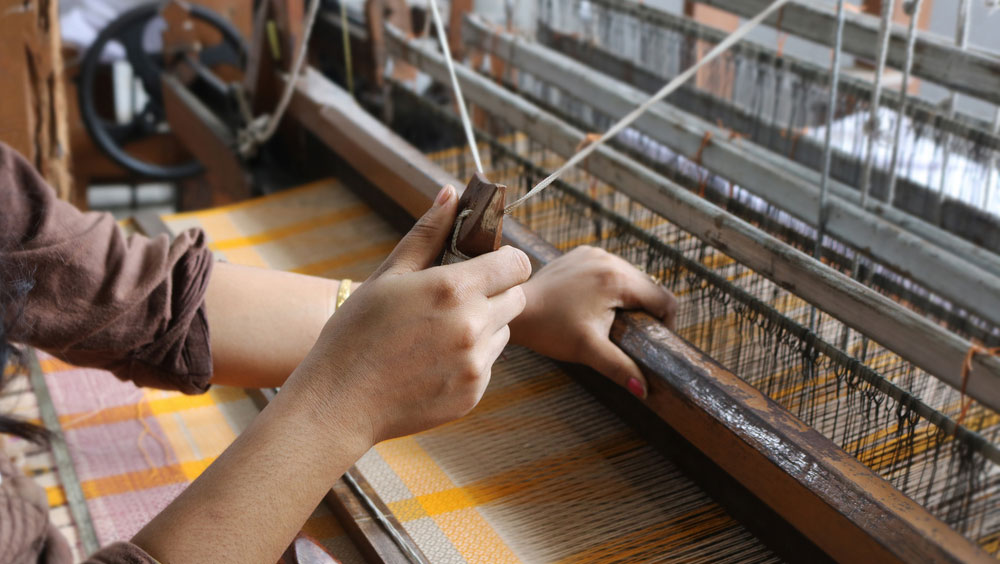
The beauty and variety of Indian handloom are legendary. The texture & color with the most elaborate woven patterns. And embroidery by the village artisans of Kerala can leave most anyone fascinated. The Handloom industry in Kerala indeed an interesting topic for people who love tradition & legacy. Let’s take a look at the history of this majestic craft that is still standing strong. In the face of many challenges under the handloom textiles of India.
Archaeological evidence traces the beginning of handloom brands in India in the sub-continent back to the Indus Valley Civilization. Succeeding the Aryan settlers in the region also adopted & further honed techniques of weaving cotton & wool. It is followed by adorning these fabrics with dyes and embroidery. Spinning, weaving, dyeing, etc gave rise to the cottage industry too. Handloom of Kerala while being driven at the household level also found a leap across the world. A variety of fabrics were traded with the Roman Empire and Indian silk traded through China via the Silk Route. Indian textiles have been praised and accepted by explorers and historians.
The appearance of the Mughal empire saw weavers getting patronage from the royalty and the creation of new fabrics too. When the Mughal empire extended its boundaries, the Indian handloom industry with weavers from Kashmir & Persia also flourished. Demand for these eco-friendly products of India grew by leaps. And bounds as the world marveled at the mastery of these handmade products of India.
Later, the arrival of the East India Company sounded the death ring for the Indian textile industry. The weavers were forced into selling exclusively to the British at remarkably low rates, pushing them into poverty and hardships. The taxation structure also was the main factor. The decline was further hastened by the industrial revolution. Advances in manufacturing technologies flooded markets in India and abroad with cheap products that Indian handlooms could no longer withstand. The freedom struggle by Mahatma Gandhi brought the Indian handloom industry back to the fore. The humble charka (spinning wheel) and khadi graced a dominant symbol of self-reliance, self-determination, & of course nationalist pride.
The handloom sector is bothered by many problems including low wages, rising costs, rise in power looms, & proliferation of fakes. The poor weavers have to contend with many issues. The experts say that new initiatives by the Indian Textiles Ministry along with private entrepreneurship. It will hopefully help the Indian handloom industry. It will regain its prominence. Graamyam is one such gentle initiative to revive the handloom of Kerala by setting up Kerala handloom online.
The Kerala handloom products are made available for the people worldwide directly by the village artisans of Kerala. Varieties of cotton handloom dupattas online are available in Graamyam. If you support the Kerala handloom online shopping. You are supporting the truly deserving village artisans. Shop today!